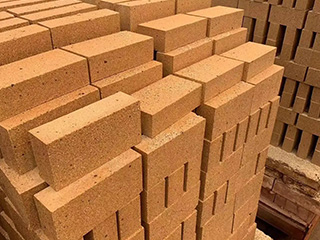Refractory materials are substances that can withstand extremely high temperatures without melting or deteriorating. They are used in a wide range of industrial applications, including furnaces, kilns, boilers, and incinerators. Refractory materials are also used in the construction of fireplaces, chimneys, and other structures that are exposed to high temperatures.

In this article, we will explore the properties of refractory materials, their classification, and their common applications.
Properties of Refractory Materials
The most important property of refractory materials is their ability to withstand high temperatures without degrading. This property is typically measured by the material's melting point, which is the temperature at which the material will begin to melt.
In addition to their high melting point, refractory materials also possess a number of other important properties. These properties include:
1.Thermal Shock Resistance: Refractory materials must be able to withstand rapid changes in temperature without cracking or breaking. This property is known as thermal shock resistance.
2.Chemical Resistance: Refractory materials must be resistant to chemical corrosion, which can occur when they are exposed to acids, alkalis, or other corrosive substances.
3.Mechanical Strength: Refractory materials must have sufficient mechanical strength to support the weight of the materials they are used to contain.
4.Thermal Conductivity: Refractory materials must have a low thermal conductivity, which means they are good insulators and do not conduct heat well.
Classification of Refractory Materials
Refractory materials can be classified in a number of different ways, including by their composition, shape, and method of manufacture.
1.Composition: Refractory materials can be made from a wide range of materials, including ceramics, metals, and polymers. Ceramic refractory materials are the most common type and are typically made from materials such as alumina, silica, and magnesia.
2.Shape: Refractory materials can be shaped in a variety of ways, including bricks, castables, and fibers. Bricks are the most common shape and are used to line the walls of furnaces and other high-temperature applications. Castables are used to fill gaps between bricks and provide additional insulation. Refractory fibers are used to make insulation blankets and other forms of thermal insulation.
3.Method of Manufacture: Refractory materials can be manufactured using a variety of methods, including firing, sintering, and casting. Firing involves heating the material to a high temperature in a kiln, while sintering involves compressing the material into a desired shape and then heating it to a high temperature. Casting involves pouring the material into a mold and allowing it to solidify.
Common Applications of Refractory Materials
Refractory materials are used in a wide range of industrial applications, including:
1.Furnaces: Refractory materials are used to line the walls of furnaces, which are used to heat materials to extremely high temperatures. The refractory lining helps to contain the heat and prevent it from escaping, while also protecting the furnace walls from the high temperatures.
2.Kilns: Refractory materials are used to line the walls of kilns, which are used to fire ceramics, glass, and other materials. The refractory lining helps to maintain a consistent temperature within the kiln, which is necessary for proper firing.
3.Boilers: Refractory materials are used in the construction of boilers, which are used to generate steam for power generation and other industrial applications. The refractory lining helps to contain the heat and prevent it from escaping, while also protecting the boiler walls from the high temperatures.
4.Incinerators: Refractory materials are used in the construction of incinerators, which are used to burn waste materials. The refractory lining helps to contain the heat and prevent it from escaping, while also protecting the incinerator walls from the high temperatures.
5.Foundries: Refractory materials are used in the casting of metals, such as iron and steel. The refractory lining helps to maintain a consistent temperature within the foundry, which is necessary for proper casting.
6.Chemical Processing: Refractory materials are used in a wide range of chemical processing applications, including the production of fertilizers, plastics, and other chemicals. The refractory lining helps to contain the heat and prevent it from escaping, while also protecting the processing equipment from the corrosive chemicals.
7.Aerospace: Refractory materials are used in the construction of spacecraft and other aerospace applications. The materials are used to protect against the high temperatures and thermal stresses that occur during launch and reentry.
Conclusion
Refractory materials are essential components in a wide range of industrial applications, providing crucial protection against high temperatures and chemical corrosion. Their ability to withstand extreme conditions has made them indispensable in the production of everything from metals and chemicals to ceramics and glass. With their remarkable properties and versatility, refractory materials will continue to play an important role in shaping the future of industry and technology.
Contact: Mgr. Han
Phone: 0086-13589497465
Email: 1255953279@qq.com
Add: Industrial Area of Lingzi Town,Zichuan District,Zibo City, Shandong,China